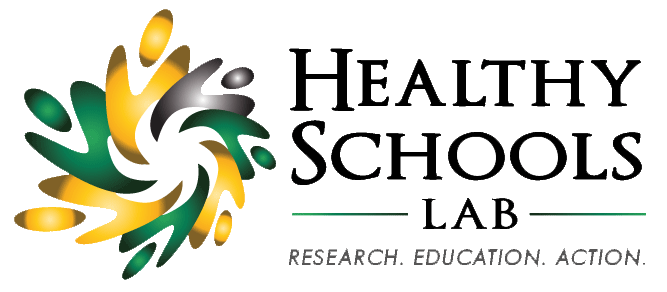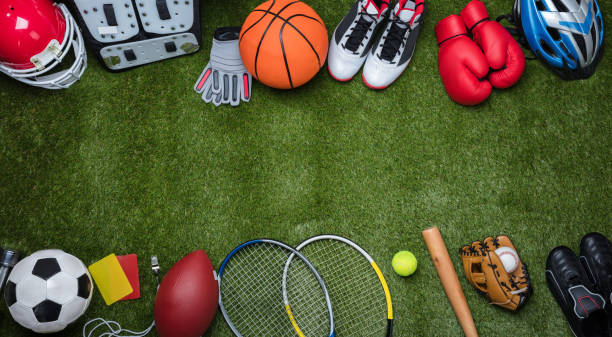Adrian Martinez is an Athletic Director at the International School Community in Bangkok, Thailand. His interest in full season school sports stems from witnessing children’s frustration for not being able to play a sport all year. This prompted the writing of this article, in which he presents the rationale for full-year school sports and an example of what a full-year sport program may look like.
The Seasonal Model and Student Choice in School Sports
Education is a dynamic field that needs to constantly adapt to the changing realities and needs of society and the world. Our classrooms look very different now from 30 or 40 years ago, with concepts such as inclusion, differentiation and agency as fundamental pillars of our practice. However, current practices in school sports are not reflective, in many cases, of some of these basic educational principles, with two main areas of improvement: Inclusion and Student Choice.
The issue of Inclusion in School Sports is currently subject to extensive debate, as reflected in this outstanding presentation from professors Lauren Sulz and Douglas Gleddie at the University of Alberta, or more briefly in this short article. However, the purpose of the present post is to focus on Student Choice.
Many schools and school systems around the world organize their sports following a seasonal structure, allowing for most sports to be played by each age group only for a limited amount of time of the year. This is inevitable in certain sports and locations where climate is a factor, but there is no reason why volleyball or basketball cannot be played year-round, or any outdoor sports in mild climates.
Educational Rationale:
There are three main educational aspects that should be considered in this debate:
- The effectiveness of the learning process: A typical sports season will last about 3 months, at the end of which some sort of official competition takes place, bringing the season to an end. It seems undeniable that a learning process that lasts for three months is not as efficient as one that happens over a prolonged period of time. If that was the case, we would be teaching mathematics very intensively at schools for three months, and then moving on to English, etc. Learning happens best in the long run, but instead of providing that opportunity for our students in sports, we expose them to a rushed learning process with a clear focus on an end-of-season competition in which in many cases what is reflected is not the learning that happens at schools, but often from students’ practices outside of the school community. The system focuses on the perceived need for schools to participate in a high number of sports competitions (many schools list their number of sports teams as an achievement in their marketing), instead of on the actual learning that should be happening in the sports practices and competitions. A year-long approach supports a natural progression, with opportunities to experience competition along the way and reflect on those experiences to keep learning and improving, and ideally with a culminating learning experience at the end of the academic year, a celebration of their growth, in the form of a competition or a million other ways to experience sports, very much the same way that we teach other subjects, with regular formative assessments and a culminating demonstration of understanding. Teaching and learning will always be more effective over nine months than over three months.
- Creating sustainable habits of physical activity: one of the main purposes (if not the main one) of School Sports is to promote habits for a healthy and active lifestyle, which can only be achieved if these habits are sustainable in the context of a balanced student life after school. Having two or three practices a week for the whole year is a much more sustainable way to cope with academics, family life and other commitments (violin lessons, robotics club, tutoring… a second sport!) than having four or five days of practice during a season, and then nothing for the rest of the year… unless they then join another sport, which in many cases they will do just because it is their only option. Students need to experience that sports are something that they can incorporate and maintain in a balanced daily life.
- Student choice: last and most important, Student Agency is a commonly agreed key factor in high quality contemporary education, with research consistently showing that students’ capacity to make their own choices about the way they learn will increase engagement, satisfaction and overall achievement. So, if we are doing this in the classroom, why are we not doing it in sports? Students participate in sports in their free time, out of their own initiative, interest and passion, so it seems even less appropriate to restrict their choices in that context, limiting them to what we (schools, conferences…) believe should be played in October or in March. Are we educating our children in taking ownership of their own decisions? If my child has a passion for basketball, which is, in essence, something highly positive for their growth and well-being, who am I to tell them that they can only play it for three months, and then play something else for the rest of the year? How am I supporting them in learning to make their own choices when those choices are undoubtedly correct in nature? How am I, ultimately, recognizing their right to practice the activity of their choice in their free time and respecting them as an individual. As an Athletic Director, it breaks my heart when students tell me “but I like volleyball, why can I not play volleyball?” (in my head I know the answer is “because xyz conference says so”). We already have enough restrictions in our programs, inevitable limitations in regards to facilities, coaching resources, time, etc. but, at least, our students, our children, deserve to play the sports that they want to play.
Putting it into practice
Shifting our seasonal programs to year-long will be a complex task that can only start with a new mindset from us Athletic Directors and administrators, involving students and parents in the conversation, and proactively looking for solutions to the challenges that we will face instead of justifying our reluctance to change in tradition, history or inertia. Each school is a world of its own, and those challenges will differ in each community, but it is key to set apart the justifications from the legitimate challenges. In the first category (always in my opinion), these are some of the ones I have found:
- Seasons provide students with the opportunity to experience different sports. Specialization, especially at younger ages, should be avoided, but an effective and student-centered year-long approach will always be flexible enough to allow students to participate in multiple sports. A student might choose to play two sports (simultaneously or at different times of the year), or practice their favorite sport twice a week for the entire year, and a second sport only once a week, or during a period of lower academic demand. At younger ages, participation in multiple sports should be promoted because of its developmental benefits, but at the middle school and especially high school level student choice is sacred. It is as important to support our multi-sports students as our single-sports students because that is their choice.
- Year-round sports are what clubs are for. From an educational standpoint that takes social-emotional development into consideration, it is key that students practice sports with their social group, and differentiation is essential when dealing with diverse skill levels. In an inclusive model, all members of the same social group practice as a group, with each student getting the instruction and competition that are appropriate for their level and interest, instead of a clear cut that breaks the social group and excludes the students that don’t “make the team” from the benefits of competition, an important part of the learning process in sports.
And finally, the two main challenges that are likely to affect each school to a certain extent, and that should be the base for starting this conversation within our school communities:
- Cost increase: Yes, this proposed model will be more costly, but as with everything in life, you can get a basic service for less (or for free in the case of many school sports teams), and higher quality for more. This conversation should always start with our students: Would they prefer to be able to practice the sport of their choice for the whole year? With the results of that survey in your hand (over 80% “yes” in surveys I have conducted among high school students), then the conversation shifts to parents: this is what our children want, and it is also what is best for them; what can we do? Each school is different, but in many cases, it will require a fee to support the cost of a program that will be between two and three times the size of before, the same way that there is usually a fee for most after-school activities. It will be, in the end, their choice: the students’ choice to keep seasons or to be able to choose their sports year-round, and the parents’ choice to pay if they want that for their children.
- Scheduling: how do I fit this in? There is not a “one size fits all” format for scheduling, but some basic ideas include:
- Progressive loads: low at younger ages to promote participation in multiple sports; enough at older ages to provide quality sustained learning.
- Spreading the load of school sport throughout the year: for example, 2 sport sessions a week all year instead of 4 sport sessions a week for 3 months.
- Doing shifts where needed (in most cases): younger students to engage in sport right after school, while high school students do their homework or student-led clubs. Staggered class finish times are a blessing for this.
- This is what a very simple example could look like for one sport in one facility with classes finishing at 3.00 pm. Again, please don’t take this as “the way to go”. This is just a visual example:
- Note that each practice group caters for 3-year groups (even 4 for high school), instead of the common 2 years grouping (varsity, junior varsity, U15…). Groups would be too crowded in the seasonal model, but with all sports offered year-round many students will not join a sport just because it is available, so that will balance numbers. The ideal groupings will depend on each school’s size, facilities and popularity of each sport.
Conclusion: ask your students
Our societies are seeing alarmingly increasing levels of sedentarism and physical inactivity year after year. If you are reading this you are an easy audience because you are already interested in the topic, but you might be going crazy thinking of ways to keep young people active. Whether you are a parent or an educator, or both, this is my message to you: what we, as adults think about school sport, is not what matters. Go and ask your children/students: if we do this, would you be more active? Would you be happier? If the answer is “yes” to one of those, let’s get to work.
_________________
Adrian grew up in Spain playing competitive tennis in his youth. He holds a Bachelor’s Degree in Sports Science from High Point University (NC), and a Master’s Degree in Sports Management from the University of Vigo (Spain). He has taught PE and led sports programs at international schools in Spain, Japan and Thailand, where he is currently based. He has two little lovely daughters and a wonderful wife who is not a teacher but from whom he learns every day.
Adrian just became interested in the topic of Sports Seasons in recent years after joining the International School Community in Bangkok as an Athletic Director and witnessing children’s frustration for not being able to play their sport of choice at school, which prompted the writing of this article. Feeling like a little island in a sea of schools that run tryouts and cut students from teams, he ran into Lauren and Doug’s work on Inclusion in School Sports, and then he started to believe that there is light at the end of the tunnel.
For further questions, comments or discussion, Adrian would love to connect with you. He can be reached at a_martinezgomez@hotmail.com or through linkedin.
Live streaming and recording links:
YouTube: https://www.youtube.com/watch?v=bpTu5howGa4
Facebook: https://www.facebook.com/events/555796606363616
Twitter: https://twitter.com/phaseglobal
Link to presentation:
https://phase.community/presentations/rethinking-the-educational-suitability-of-sports-seasons/


